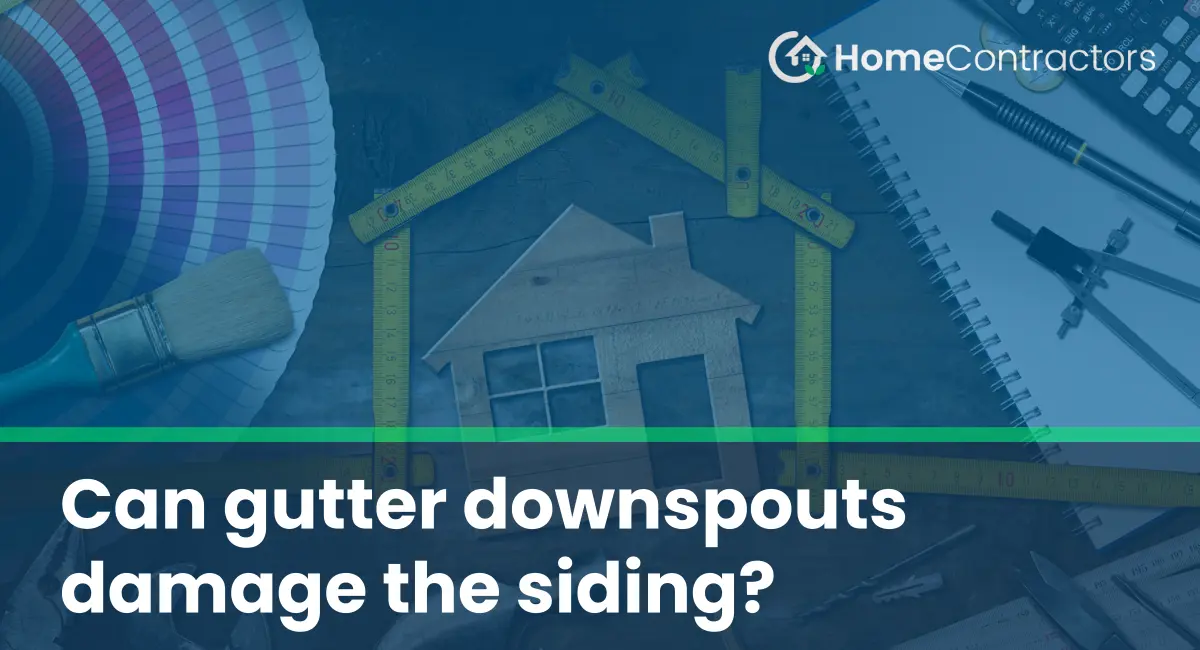Gutter downspouts are an essential component of any house’s drainage system. They help direct rainwater away from the roof and foundation, preventing water damage and potential structural issues. However, if not properly maintained or installed, gutter downspouts can potentially damage the siding of your home. In this article, we will delve deeper into the various ways gutter downspouts could cause harm to your siding and, more importantly, explore preventive measures to protect your home.
Understanding the Function of Gutter Downspouts
To better comprehend the potential damage, it is crucial to first understand how gutter downspouts function. Gutter downspouts are responsible for transporting rainwater from the gutters to a safe distance away from your home’s foundation. When it rains, water flows down your roof and into the gutters, which collect and channel it along their length. Downspouts provide an outlet for this water to exit, ensuring it doesn’t cause any harm.
The Potential Risks to Siding
While gutter downspouts play a crucial role in protecting your home, they can inadvertently harm the siding if not properly maintained or installed. Here are some potential risks homeowners should be aware of:
- Water Overflow: When gutters become clogged with debris, such as leaves and twigs, water may overflow from the gutters and spill directly onto the siding. Continuous exposure to water can cause rot, mold, and other forms of water damage, jeopardizing the integrity of the siding.
- Splashback: Inadequate positioning of downspouts can lead to splashback. This occurs when water is forcefully expelled from the downspouts, causing it to hit the ground and bounce back onto the lower sections of the siding. Over time, constant splashback can cause the siding to deteriorate, crack, or lose its protective coating.
- Ineffective Drainage: If downspouts are not properly directed away from the house, water can pool near the foundation and the lower sections of the siding. This stagnant water can lead to moisture buildup, which may result in mildew, rot, or even structural damage in extreme cases.
- Ice Dams: During colder months, melting snow or ice can accumulate on a roof’s edge, forming ice dams. If not addressed, these ice dams can prevent proper water drainage, resulting in water seeping underneath the shingles and potentially damaging the siding.
Preventive Measures to Protect Your Siding
Fortunately, there are several preventive measures that homeowners can take to safeguard their siding from potential damage caused by gutter downspouts:
- Regular Maintenance: Regularly inspect and clean your gutters and downspouts, removing any debris that may hinder the water flow. It is advisable to clean gutters at least twice a year or more frequently if you live in an area with heavy foliage.
- Ensure Proper Positioning: Make sure downspouts are angled away from the house, directing water at least five feet away from the foundation. This ensures effective drainage and minimizes the risk of water pooling along the siding.
- Install Splash Blocks or Downspout Extensions: Placing splash blocks or downspout extensions at the end of downspouts can divert water away from the foundation and siding, minimizing the potential for splashback or pooling.
- Use Gutter Guards: Installing gutter guards can significantly reduce the chances of clogs by preventing leaves and other debris from entering the gutters. This minimizes the risk of water overflowing onto the siding.
- Consider Heating Cables: In areas prone to ice dams, installing heating cables along the roof’s edge can help prevent the formation of ice dams, ensuring proper water drainage and protecting the siding.
While gutter downspouts are essential for maintaining the integrity of your home’s foundation and preventing water damage, they can also inadvertently cause harm to your siding. However, with proper maintenance, positioning, and additional protective measures, homeowners can mitigate the potential risks associated with gutter downspouts. By implementing these preventive measures, you can ensure that rainwater is effectively directed away from your siding, preserving its condition and prolonging its lifespan.
